Related Research Articles

Nazi Germany used six extermination camps, also called death camps, or killing centers, in Central Europe, primarily Occupied Poland, during World War II to systematically murder over 2.7 million people – mostly Jews – in the Holocaust. The victims of death camps were primarily murdered by gassing, either in permanent installations constructed for this specific purpose, or by means of gas vans. The six extermination camps were Chełmno, Belzec, Sobibor, Treblinka, Majdanek and Auschwitz-Birkenau. Extermination through labour was also used at the Auschwitz and Majdanek death camps. Millions were also murdered in concentration camps, in the Aktion T4, or directly on site.

Treblinka was the second-deadliest extermination camp to be built and operated by Nazi Germany in occupied Poland during World War II. It was in a forest north-east of Warsaw, 4 km (2.5 mi) south of the village of Treblinka in what is now the Masovian Voivodeship. The camp operated between 23 July 1942 and 19 October 1943 as part of Operation Reinhard, the deadliest phase of the Final Solution. During this time, it is estimated that between 700,000 and 900,000 Jews were murdered in its gas chambers, along with 2,000 Romani people. More Jews were murdered at Treblinka than at any other Nazi extermination camp apart from Auschwitz-Birkenau.
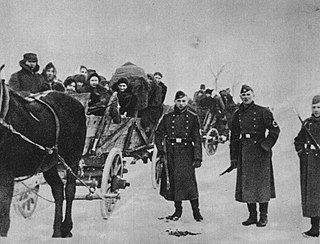
Belzec was a Nazi German extermination camp in occupied Poland. It was built by the SS for the purpose of implementing the secretive Operation Reinhard, the plan to murder all Polish Jews, a major part of the "Final Solution", the overall Nazi effort to complete the genocide of all European Jews. Before Germany's defeat put an end to this project more than six million Jews had been murdered in the Holocaust. The camp operated from 17 March 1942 to the end of June 1943. It was situated about 500 m (1,600 ft) south of the local railroad station of Bełżec, in the new Lublin District of the General Government territory of German-occupied Poland. The burning of exhumed corpses on five open-air grids and bone crushing continued until March 1943.
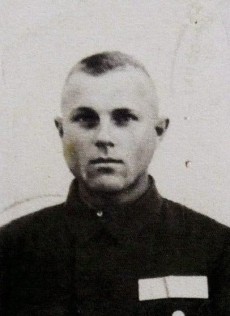
John Demjanjuk was a Trawniki man and Nazi camp guard at Sobibor extermination camp, Majdanek, and Flossenbürg. Demjanjuk became the center of global media attention in the 1980s, when he was tried and convicted in Israel after being misidentified as "Ivan the Terrible", a notoriously cruel watchman at Treblinka extermination camp. In 1993 the verdict was overturned. Shortly before his death, he was tried and convicted in the Federal Republic of Germany as an accessory to the 28,060 murders that occurred during his service at Sobibor.
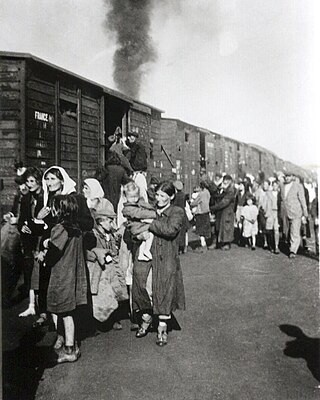
Operation Reinhard or Operation Reinhardt was the codename of the secret German plan in World War II to exterminate Polish Jews in the General Government district of German-occupied Poland. This deadliest phase of the Holocaust was marked by the introduction of extermination camps. The operation proceeded from March 1942 to November 1943; about 1.47 million or more Jews were murdered in just 100 days from late July to early November 1942, a rate which is approximately 83% higher than the commonly suggested figure for the kill rate in the Rwandan genocide. In the time frame of July to October 1942, the overall death toll, including all killings of Jews and not just Operation Reinhard, amounted to two million killed in those four months alone. It was the single fastest rate of genocidal killing in history.

Hiwi, the German abbreviation of the word Hilfswilliger or, in English, auxiliary volunteer, designated, during World War II, a member of different kinds of voluntary auxiliary forces made up of recruits indigenous to the territories of Eastern Europe occupied by Nazi Germany. Adolf Hitler reluctantly agreed to allow recruitment of Soviet citizens in the Rear Areas during Operation Barbarossa. In a short period of time, many of them were moved to combat units.
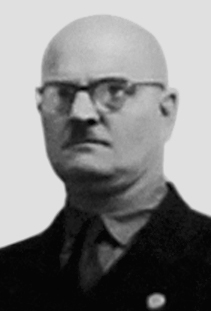
Christian Wirth was a German SS officer and leading Holocaust perpetrator who was one of the primary architects of the program to exterminate the Jewish people of Poland, known as Operation Reinhard. His nicknames included Christian the Cruel, Stuka, and The Wild Christian due to the extremity of his behaviour among the SS and Trawniki guards and to the camp inmates and victims.

The Trawniki concentration camp was set up by Nazi Germany in the village of Trawniki about 40 kilometres (25 mi) southeast of Lublin during the occupation of Poland in World War II. Throughout its existence the camp served a dual function. It was organized on the grounds of the former Polish sugar refinery of the Central Industrial Region, and subdivided into at least three distinct zones.
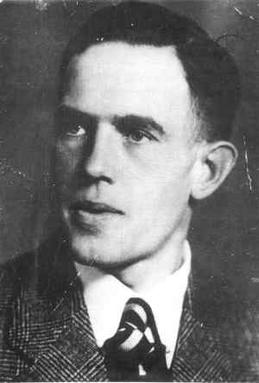
Lorenz Hackenholt was a member of the Schutzstaffel (SS) with the rank of Hauptscharführer. During World War II Hackenholt built and operated the gas chamber at the Bełżec extermination camp in occupied Poland during Operation Reinhard. In so doing, he personally carried out the murder of hundreds of thousands of people.

Feodor Fedorenko was a Soviet Nazi collaborator and war criminal who served at Treblinka extermination camp in German occupied Poland during World War II. As a former Soviet citizen admitted to the United States under a DPA visa (1949), Fedorenko became a naturalized U.S. citizen in 1970. His prior Nazi collaboration was discovered in 1977, leading to his denaturalization in 1981. He was deported to the USSR and sentenced to death for treason and participation in the Holocaust. Fedorenko was executed in 1987.
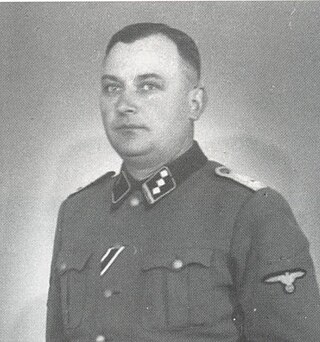
Richard Thomalla was a German war criminal and SS commander of Nazi Germany. A civil engineer by profession, he was head of the SS Central Building Administration at Lublin reservation in occupied Poland. Thomalla was in charge of construction for the Operation Reinhard death camps Bełżec, Sobibor and Treblinka during the Holocaust in Poland.
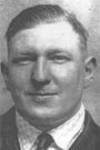
Erich Fuchs was an SS functionary who worked for the Action T4 mass-murder program, and for the Operation Reinhard phase of the Holocaust.

Siegfried Graetschus was a German SS functionary at the Sobibor extermination camp during Operation Reinhard, the deadliest phase of the Holocaust in occupied Poland. He was assassinated by a prisoner during the Sobibor uprising.

Heinrich Arthur Matthes was a German SS commander during the Nazi era. He served as a deputy commandant of Treblinka extermination camp during the Operation Reinhard phase of the Holocaust in Poland. Matthes was appointed chief of the extermination area at Camp 2 where the gas chambers were built and managed by the SS personnel overseeing some 300 slave labourers disposing of corpses under penalty of death. He was tried in the 1964 Treblinka trials, convicted, and sentenced to life imprisonment.
"Ivan the Terrible" is the nickname given to a notorious guard at the Treblinka extermination camp during the Holocaust. The moniker alluded to Ivan IV, also known as Ivan the Terrible, the infamous tsar of Russia. "Ivan the Terrible" gained international recognition following the 1986 John Demjanjuk case. By 1944, a cruel guard named "Ivan", sharing his distinct duties and extremely violent behavior with a guard named "Nicholas", was mentioned in survivor literature. Ukrainian–American John Demjanjuk was first accused of being Ivan the Terrible at the Treblinka concentration camp. Demjanjuk was found guilty of war crimes and was sentenced to death by hanging. Exculpatory material in the form of conflicting identifications from Soviet archives was subsequently released, identifying Ivan the Terrible as one Ivan Marchenko, leading the Supreme Court of Israel to acquit Demjanjuk in 1993 because of reasonable doubt. Demjanjuk was later extradited to Germany where he was convicted in 2011 of war crimes for having served at Sobibor extermination camp. While awaiting his appeal hearing, Demjanjuk died at the age of 91 in a nursing home. Under German law, his guilt was revoked, reinforcing his presumed innocence.

Fritz Erich Schmidt was a low-ranking commander in the Schutzstaffel of Nazi Germany and Holocaust perpetrator during World War II. He served as a guard and driver at the Sonnenstein Euthanasia Centre and at the Bernburg Euthanasia Centre in 1940–41 with the rank of Unterscharführer. Schmidt was transferred to Treblinka extermination camp along with other gassing specialists in 1942. At Treblinka, he was in charge of the engine room feeding exhaust to the gas chambers.

Sonderdienst were mostly non-German Nazi paramilitary formations created in the occupied General Government during the occupation of Poland in World War II. They were based on similar SS formations called Volksdeutscher Selbstschutz operating in the Warthegau district of German-annexed western Poland in 1939.

During World War II, Trawniki men were Eastern European Nazi collaborators, consisting of either volunteers or recruits from prisoner-of-war camps set up by Nazi Germany for Soviet Red Army soldiers captured in the border regions during Operation Barbarossa launched in June 1941. Thousands of these volunteers served in the General Government territory of German-occupied Poland until the end of World War II. Trawnikis belonged to a category of Hiwis, Nazi auxiliary forces recruited from native subjects serving in various jobs such as concentration camp guards.

SS-OberscharführerKarl Pötzinger (1908–1944) born in Leipzig, Germany, was a Holocaust perpetrator who began his World War II career as the Action T4 “burner” at the Brandenburg Euthanasia Centre and at the Bernburg Euthanasia Centre with the rank of Staff Sergeant in the SA. Pötzinger was a career policeman at the outbreak of war. He was transferred to Treblinka extermination camp at the onset of Operation Reinhard of 1942 along with other gassing specialists. Pötzinger became Deputy Commandant of Treblinka II under SS-Scharführer Heinrich Matthes, supervising the gas chambers and later, serving as head of the cremation command in the Totenlager as soon as the covering up Nazi crimes became paramount to the Nazi leadership notably to Heinrich Himmler himself during his visit to Treblinka in 1943.
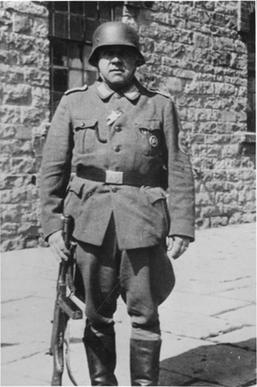
Otto Stadie was a German nurse and member of the Action T4, the Nazi forced euthanasia programme. During the Holocaust in occupied Poland he kept the register of stolen gold and diamonds at the Treblinka extermination camp. He was convicted in the first Treblinka trial of 1965.
References
- ↑ ARC (6 May 2005), See: Nikolay Shalayev. "Volunteer Auxiliaries" Action Reinhard Camps.
- ↑ Michele Lesie and Bill Sloat (11 May 2011), Who was Ivan Marczenko? Plain Dealer Cleveland.com
- ↑ Nikolay Yegorovich Shalayev Court Proceedings Extracts & Interrogations Former Trawniki SS and Ukrainian Civilians serving in the Treblinka Death Camp. 18 December 1950
- ↑ Lance Ackerfeld (2008), Statement of Nikolay Yegorovich Shalayev, 3 May 1951. "Sources of Manpower". Yizkor Book Project.
- ↑ Possible ‘Ivan’ Last Seen In Brothel In 1945 With AM-Israel-Demjanjuk, Bjt
- ↑ "Court Proceedings Extracts & Interrogations Former Trawniki SS and Ukrainian Civilians serving in the Treblinka Death Camp". www.holocaustresearchproject.org. Retrieved 2023-02-09.